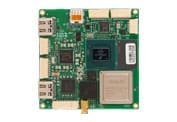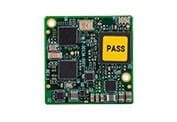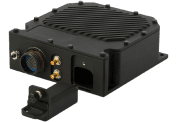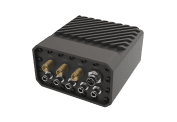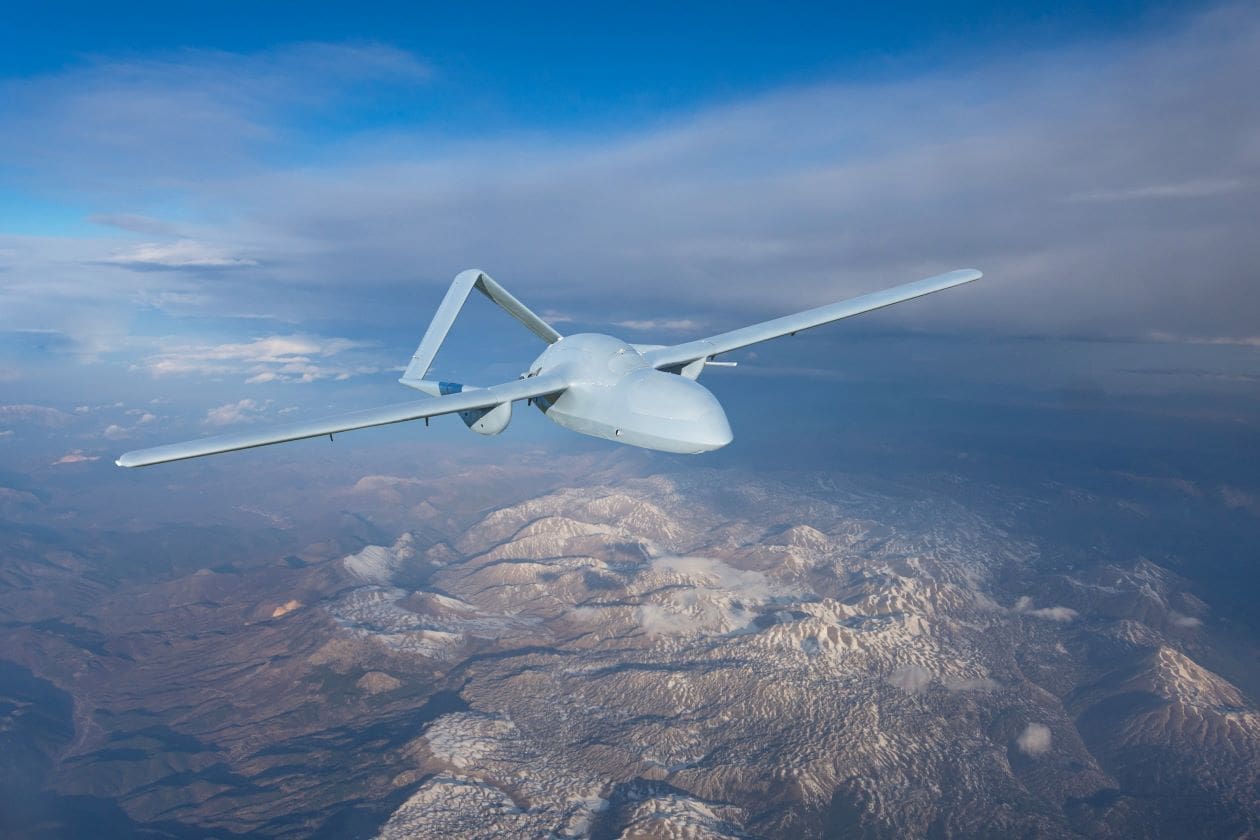An increase in terror threats, unconventional military threats, and geopolitical tensions worldwide has led to an increase in demand for unmanned aerial vehicles (UAVs) to target terrorist and insurgent groups across the globe. The benefits are clear: reduction in risk to the lives of defense personnel, precise strikes to eliminate enemy groups, and cost-effectiveness. Advances in technologies used in UAVs have led to enhanced capabilities of UAVs to perform various military and homeland security (HLS) tasks, such as surveillance, reconnaissance, and combat strategies. From their humble beginnings as rudimentary surveillance tools, drones have transformed into sophisticated instruments of war and peacekeeping.
The military drone market size is expected to be worth $17 billion by 2027, driven by increasing government funding for military drones. The Teal Group ups the ante by predicting worldwide military UAS spending of $216.5 billion over the next decade.
The Current State of Drone Technology
Today’s drones represent technological marvels, integrating advanced AI capabilities, edge computing, and enhanced surveillance features, along with improved endurance. These innovations are crucial for military and HLS applications. Some advanced features include:
Autonomous Navigation: Modern drones are equipped with cutting-edge Artificial Intelligence (AI) and edge computing that enables them to navigate complex environments autonomously. This includes obstacle avoidance, terrain analysis, and even adaptive mission planning based on real-time data. For example, imagine a search and rescue mission in a dense forest, where a drone uses its AI edge computing capabilities to navigate through the complex environment. It can identify and avoid obstacles like trees and cliffs, analyze the terrain to find the safest and most efficient routes, and adapt its flight plan in real-time based on changes in the environment, such as shifting weather patterns or new information about the missing person’s location.
Decision Making: AI algorithms allow drones to make critical decisions rapidly. For instance, a drone can analyze threats, select targets, and even choose flight paths with minimal human input. In a military operation, a drone equipped with AI algorithms can rapidly analyze aerial footage to identify potential threats, such as enemy combatants or unsecured territories. It can then autonomously select the safest flight path to avoid detection or confrontation, and prioritize targets for surveillance based on the level of threat they pose, all with minimal input from human operators.
High-Resolution Imaging: The imaging technology in drones now offers incredibly high resolution, allowing for detailed analysis of terrain, structures, and even individual faces from significant altitudes. During an urban surveillance task, a drone uses its high-resolution cameras to capture detailed images of a cityscape. This allows for the clear identification of individual faces in a crowd, detailed analysis of structural integrity of buildings post-natural disaster, or even spotting suspicious activities from high altitudes that would be impossible for the human eye to detect.
Real-Time Data Transmission: Drones can stream data back to command centers in real time, providing instant intelligence and situational awareness. This capability is crucial for time-sensitive operations and decision-making. In a rapidly evolving crisis situation, like a natural disaster or a security breach, drones can stream live video and sensor data directly to command centers. This real-time transmission provides commanders with the ability to perform intelligent video analysis, enabling them to make informed decisions quickly, like deploying resources to specific areas or adjusting strategies in response to live developments.
Extended Air Time: Advancements in battery and propulsion technologies have enabled drones to stay airborne for extended periods – some models can remain operational for days without needing to land. In a long-duration border surveillance mission, a military drone equipped with enhanced battery and propulsion technology can remain airborne for several days. This drone patrols a large and potentially hostile border area, continuously monitoring for illegal crossings, smuggling activities, or enemy incursions. Its extended air time ensures persistent surveillance, providing a continuous stream of intelligence to border security forces and enabling them to respond swiftly to any detected threats.
Wide Area Coverage: These endurance improvements mean drones can cover vast geographical areas, monitoring and gathering data over extended periods, which is essential for large-scale operations. In a large-scale disaster response scenario, such as after a major earthquake or hurricane, an HLS drone with wide area coverage capabilities can be deployed to survey the affected region. The drone quickly covers a vast geographical area, assessing damage, identifying areas in urgent need of assistance, and locating survivors. This wide area coverage is crucial for efficiently directing emergency response efforts and resources, ensuring that aid reaches the most affected areas in a timely manner.

Trends and Forecast: Technological Innovations Paving the Path to the Future
As we look to the future, several key trends indicate where drone technology is heading.
Autonomy at the Forefront: Future drones will be even more autonomous, capable of performing complex tasks such as tactical strikes, surveillance missions, and supply deliveries without human intervention. The MQ-9 Reaper, used by the U.S. military, exemplifies this trend with capabilities for autonomous mission execution based on pre-programmed criteria, showcasing the increasing autonomy in operational deployment.
Coordinated Operations: Swarm technology involves multiple drones working together, coordinated through advanced AI. This approach allows for complex, large-scale operations where drones collaborate to achieve common objectives. Swarm drones can be used in various scenarios, from reconnaissance missions to creating real-time 3D maps of battlefields to overwhelming enemy defenses. The U.S. Department of Defense’s Strategic Capabilities Office successfully tested a large micro-drone swarm at China Lake, California, demonstrating advanced swarm behaviors like collective decision-making and adaptive formation flying. The swarm robotics market, including drone swarms, is projected to grow from $0.8 billion in 2023 to $3 billion by 2028, with a CAGR of 30.9%.
Stealth and Versatility: The trend towards making drones smaller makes them less detectable and more adaptable for various operations, including covert surveillance and targeted operations in dense urban environments. The market for small drones is expected to grow at a CAGR of 24.2%, from $14.04 billion in 2022 to $77 billion by 2030. The Black Hornet Nano drones, utilized by the U.S. and British armed forces, are notable examples of this miniaturization trend. These small, palm-sized drones are effective for discreet surveillance and reconnaissance in challenging environments.
5G Integration: The integration of 5G technology with drones is expected to enhance communication and data transfer capabilities. Trials by AT&T and the U.S. Air Force using 5G technology for drone operations have shown improvements in data processing and real-time communication. Research has shown that 5G allows drones to transmit HD footage 100 times faster than 4G, providing pilots with high-quality imaging in real time.
AI Adoption in Military Drones: According to Fortune Business Insights, the increasing use of UAVs in defense and security for applications like combat operations and surveillance, coupled with rising defense expenditure, is expected to fuel the demand for AI-enhanced military drones. Advanced drones equipped with AI edge computing and autonomous flight systems are being developed for military use, with capabilities including multiple sensor systems and internal weapons compartments.
The Rise of Advanced Drone Technology in Warfare and Security
The future of warfare and security is being redefined by the rapid advancement and deployment of drone technology in military and HLS applications. The integration of sophisticated AI, high-resolution imaging, real-time data transmission, and extended endurance capabilities has transformed drones into invaluable assets for surveillance, reconnaissance, and combat operations. The trends towards greater autonomy, coordinated swarm operations, stealth, and 5G integration not only highlight the technological evolution of these UAVs but also underscore their growing strategic importance.
As the market for military drones continues to expand, driven by increasing government funding and technological innovations, drones are set to play an even more crucial role in shaping the landscape of global security and defense strategies. The future holds not just an expansion in the capabilities and applications of drones but also presents new challenges and opportunities in terms of regulation, ethical considerations, and international security dynamics.

